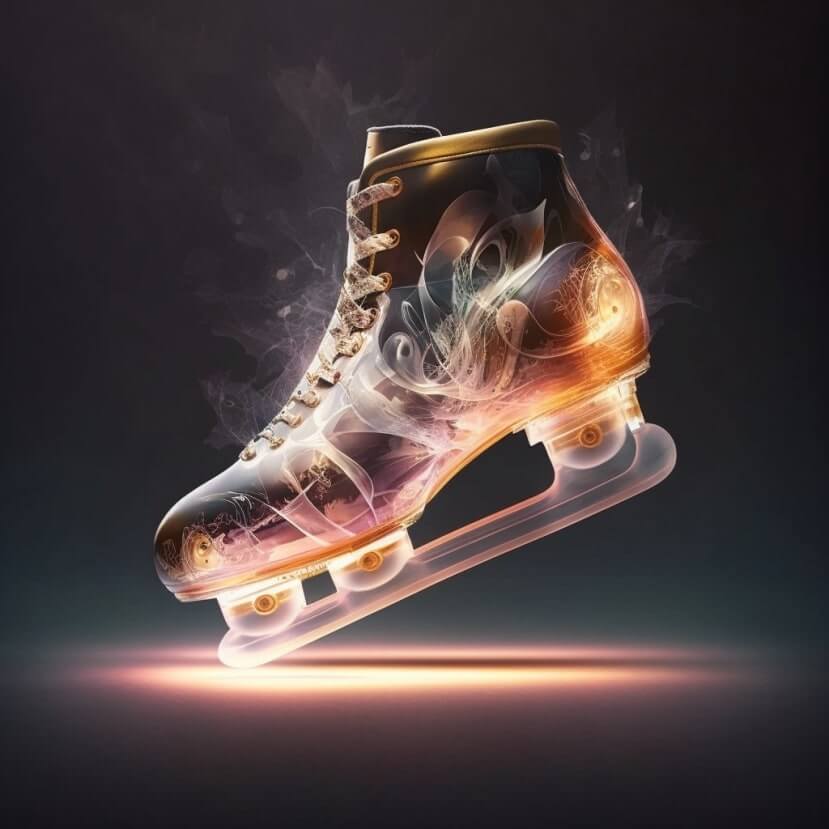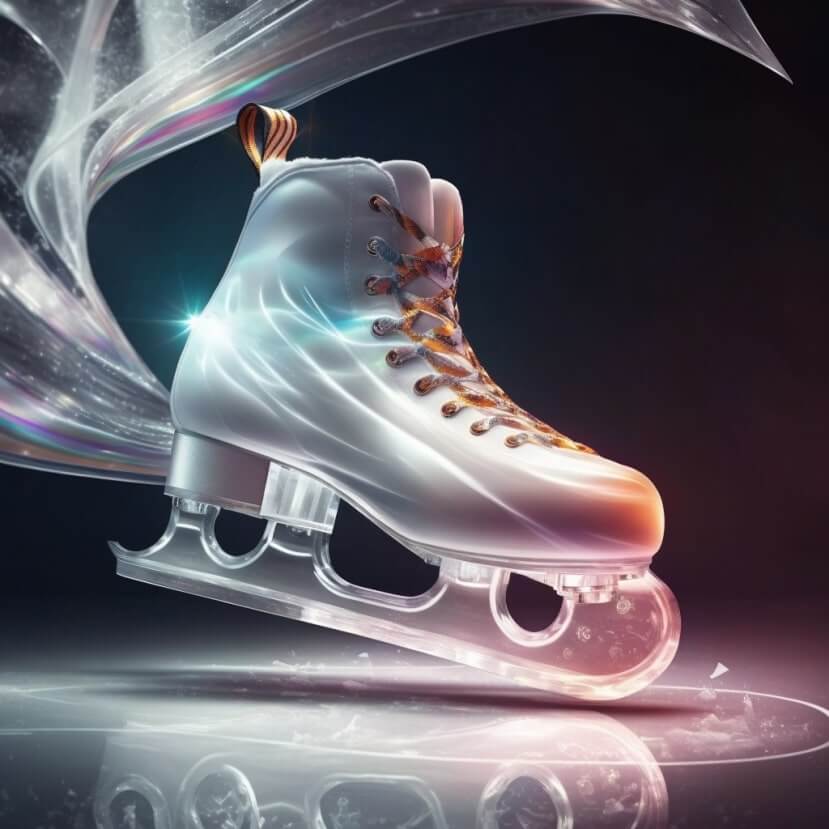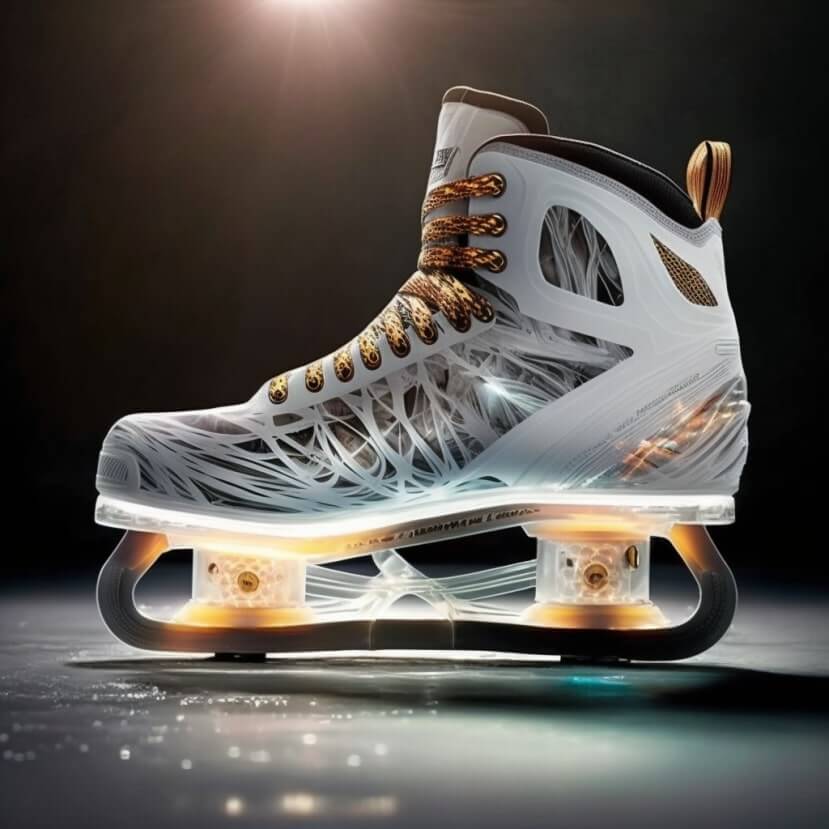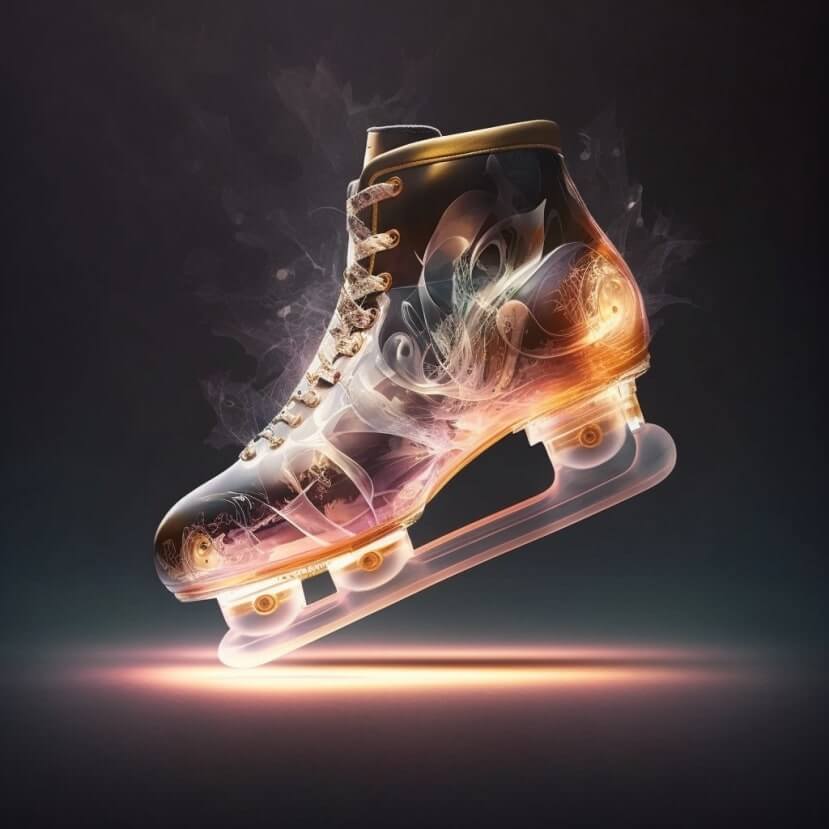
Skating is a popular recreational and competitive activity that requires the right equipment, particularly skating shoes. With so many options available, it can be challenging to determine which skating shoes are right for you. This guide provides an in-depth overview of skating shoes, including types, features, sizing, maintenance, and more.
Introduction
Skating shoes, also known as ice skates, are specialized shoes that are designed to glide over ice. They are used in a variety of skating activities, from recreational skating to competitive figure skating and ice hockey. Choosing the right skating shoes is crucial to ensure that you can perform your best while also keeping your feet comfortable and protected.
In this guide, we will provide a comprehensive overview of skating shoes, including the different types of skating shoes available, factors to consider when choosing skating shoes, how to properly size and fit skating shoes, and how to maintain and care for your skating shoes. Additionally, we will address some frequently asked questions about skating shoes to help you make informed decisions when purchasing and using them. Whether you’re a beginner or a seasoned skater, this guide will provide you with all the information you need to find the perfect pair of skating shoes for your needs.
Types of Skating Shoes
When it comes to skating shoes, there are several different types available, each designed to meet the specific needs of different skating activities. Here are some of the most common types of skating shoes:
Figure Skating Shoes
Figure skating shoes are designed to provide skaters with maximum control and flexibility. They are typically made from leather or other high-quality materials and feature a stiff boot that provides ankle support and helps skaters maintain proper form. Some of the features and benefits of figure skating shoes include:

- Lightweight design for easy movement
- Padding for added comfort and protection
- Durable construction for long-lasting use
- Available in a range of styles and designs to suit personal preferences
When it comes to blade types and considerations, figure skating shoes typically feature longer blades with a curved design that allows for easy turns and maneuvers. Some common brands of figure skating shoes include Jackson Ultima, Riedell, and Edea.
Ice Hockey Skating Shoes
Ice hockey skating shoes are designed with durability and performance in mind. They feature a stiff boot that provides support and protection, as well as a padded liner for added comfort. Some of the features and benefits of ice hockey skating shoes include:

- Reinforced toe caps and ankle support for added protection
- Durable construction to withstand the demands of the game
- Lightweight design for easy movement on the ice
- Available in a range of styles and designs to suit personal preferences
When it comes to blade types and considerations, ice hockey skating shoes typically feature shorter blades with a straight design that allows for quick acceleration and sudden stops. Some common brands of ice hockey skating shoes include Bauer, CCM, and Graf.
Speed Skating Shoes
Speed skating shoes are designed to help skaters achieve maximum speed and control on the ice. They feature a lightweight and flexible design that allows for quick and easy movement, as well as a low-cut boot that provides minimal ankle support. Some of the features and benefits of speed skating shoes include:
- Sleek design for minimal wind resistance
- Lightweight construction for maximum speed
- Durable materials for long-lasting use
- Available in a range of styles and designs to suit personal preferences
When it comes to blade types and considerations, speed skating shoes typically feature longer blades with a straight design that allows for maximum speed and glide. Some common brands of speed skating shoes include Viking, Luigino, and Powerslide.
Factors to Consider when Choosing Skating Shoes
Choosing the right skating shoes can make a big difference in your performance on the ice, as well as your overall comfort and safety. Here are some factors to consider when choosing skating shoes:
Foot Shape and Size
The first thing to consider when choosing skating shoes is your foot shape and size. Skating shoes should fit snugly around your foot to provide support and stability, but they should not be too tight or uncomfortable. Be sure to measure your foot carefully before purchasing skating shoes and consult the sizing charts provided by the manufacturer to ensure a proper fit.
Comfort and Support
Comfort and support are also important factors to consider when choosing skating shoes. Look for shoes that provide ample padding and support around the ankle and foot to prevent injury and improve overall comfort. Additionally, consider the materials used in the construction of the shoe to ensure they are durable and provide long-lasting comfort.

Stiffness and Flexibility
The stiffness and flexibility of skating shoes can also play a role in your performance on the ice. Figure skaters typically prefer a stiffer boot to provide maximum support and control, while speed skaters prefer a more flexible boot to allow for quick and easy movement. When choosing skating shoes, consider your skating style and personal preferences to determine the appropriate level of stiffness and flexibility.
Lacing System and Closure Type
The lacing system and closure type of skating shoes can also affect your comfort and performance on the ice. Look for shoes with a secure lacing system that allows you to adjust the fit to your liking. Additionally, consider the closure type of the shoe, such as buckles, straps, or laces, to ensure a secure and comfortable fit.
Blade Type and Length
The type and length of the blade on your skating shoes can also impact your performance on the ice. Figure skaters typically prefer longer blades with a curved design for better control and ease of movement, while speed skaters prefer shorter blades with a straight design for maximum speed and glide. When choosing skating shoes, consider the type of skating you will be doing and select the appropriate blade type and length for your needs.
By considering these factors when choosing skating shoes, you can ensure that you select a pair that provides the right combination of comfort, support, and performance for your skating needs.
Sizing and Fitting
Getting the right fit when it comes to skating shoes is crucial for your comfort and safety on the ice. Here are some key things to keep in mind when sizing and fitting your skating shoes:
Measuring and Determining Foot Size
To determine your foot size, measure the length and width of your foot while standing up. Use a ruler or measuring tape to measure the distance from the back of your heel to the tip of your longest toe, then measure the width of your foot at the widest point. Once you have your measurements, consult the sizing charts provided by the manufacturer to determine the appropriate size for your skating shoes.
How to Fit Skating Shoes Properly
When trying on skating shoes, wear the same type of socks you plan to wear while skating. Lace up the shoes snugly but not too tightly, making sure the heel is snugly in place and the toe box provides ample room for your toes to wiggle. Walk around in the shoes to ensure they provide the necessary support and comfort.
Common Fitting Problems and Solutions
Some common fitting problems with skating shoes include heel lift, pressure points, and a loose or tight fit. To address these issues, consider using heel inserts or padding to prevent heel lift, adjusting the lacing system to relieve pressure points, or selecting a different size or style of skating shoe to ensure a proper fit.
Break-in Period
It’s important to note that skating shoes may require a break-in period before they become fully comfortable and supportive. It’s recommended to wear new skating shoes for short periods of time at first, gradually increasing the amount of time you wear them as they become more comfortable. Be patient with the break-in process to ensure that your skating shoes provide optimal comfort and support.
By taking the time to properly size and fit your skating shoes, you can ensure that they provide the necessary support, comfort, and performance for your skating needs.
Skating Shoe Maintenance
Proper maintenance is essential to ensure that your skating shoes provide optimal performance and longevity. Here are some key maintenance tips to keep in mind:
Proper Cleaning and Drying
After each use, it’s important to clean and dry your skating shoes to prevent damage and odor buildup. Use a soft cloth or sponge to wipe down the exterior of the shoe, then remove the footbed and allow it to dry separately. Air-dry your skating shoes in a well-ventilated area, away from direct sunlight or heat.
Blade Sharpening and Maintenance
Sharp blades are crucial for optimal performance on the ice. It’s recommended to have your skating shoe blades sharpened by a professional every 20 to 30 hours of use or whenever they become dull. Additionally, inspect the blades regularly for signs of wear or damage, such as cracks or chips, and replace them if necessary.
Storage Tips
Proper storage can also help prolong the life of your skating shoes. After cleaning and drying your shoes, store them in a cool, dry place, away from direct sunlight or heat. Avoid storing your shoes in a damp or humid environment, as this can lead to mold or mildew growth. Additionally, avoid storing heavy objects on top of your skating shoes, as this can damage the blades or deform the boot.
By following these maintenance tips, you can help ensure that your skating shoes provide optimal performance and longevity.
Frequently Asked Questions (FAQs)
Here are some frequently asked questions about skating shoes:
What is the difference between figure skating shoes and ice hockey skating shoes?
Figure skating shoes and ice hockey skating shoes differ in several ways. Figure skating shoes are typically designed with a stiffer boot to provide maximum support and control, while ice hockey skating shoes are designed with a more flexible boot for better maneuverability. Additionally, figure skating shoes typically feature longer blades with a curved design for better control, while ice hockey skating shoes feature shorter blades with a straight design for quick acceleration and sudden stops.
How often should I sharpen my skating shoe blades?
It’s recommended to have your skating shoe blades sharpened by a professional every 20 to 30 hours of use or whenever they become dull. Regular blade sharpening can help ensure that your skating shoes provide optimal performance on the ice.
Can I use figure skating shoes for ice hockey or vice versa?
It’s not recommended to use figure skating shoes for ice hockey or vice versa. The design and blade types of these shoes are optimized for the specific demands of their respective sports, and using the wrong type of shoe can negatively impact your performance and safety on the ice.
Can I wear my skating shoes off the ice?
It’s not recommended to wear your skating shoes off the ice, as the blades can become damaged or dull when used on hard surfaces like pavement or concrete. Additionally, the soft boot of skating shoes is not designed for everyday wear and tear and can become damaged or deformed when worn outside of the rink.
What is the best way to break in new skating shoes?
Breaking in new skating shoes can take time, so it’s important to be patient and not push yourself too hard too soon. Wear your new skating shoes for short periods of time at first, gradually increasing the amount of time you wear them as they become more comfortable. Additionally, consider using a gel or foam padding to cushion any pressure points and help the shoes mold to your feet.
Can I order custom-fitted skating shoes?
Yes, many manufacturers offer custom-fitted skating shoes to meet the specific needs and preferences of individual skaters. Custom-fitted shoes can provide optimal support, comfort, and performance on the ice, but they can also be more expensive than off-the-shelf models. If you are considering custom-fitted skating shoes, be sure to work with a reputable manufacturer or retailer with experience in fitting and sizing skating shoes.
Conclusion
Skating shoes are a crucial piece of equipment for any skater, whether you’re a beginner or a seasoned pro. By understanding the different types of skating shoes available, factors to consider when choosing and fitting skating shoes, and best practices for maintenance and care, you can ensure that your skating shoes provide optimal support, comfort, and performance on the ice.
In summary, when selecting skating shoes, be sure to consider your foot shape and size, skating style and preferences, and blade type and length. Properly fitting and maintaining your skating shoes can help prevent injury and prolong the life of your equipment. Remember to have your blades sharpened regularly by a professional and store your skating shoes in a cool, dry place away from direct sunlight or heat.
We hope this guide has provided you with valuable information on skating shoes and helped you make informed decisions when purchasing and using them. Whether you’re a recreational skater or a competitive athlete, investing in a quality pair of skating shoes is essential for enjoying the sport and reaching your full potential on the ice.
Semantically Similar FAQs
Here are some semantically similar frequently asked questions about skating shoes:
What are the best types of ice skates for beginners?
The best types of ice skates for beginners depend on the individual’s skating goals and preferences. Some beginners may prefer figure skates for their added support and control, while others may prefer ice hockey skates for their flexibility and maneuverability.
How do I choose the right ice skates for my child?
When choosing ice skates for a child, it’s important to consider their foot size and shape, skating ability and preferences, and the type of skating they will be doing. Be sure to consult the sizing charts provided by the manufacturer and allow room for growth, but not too much to ensure proper support.
How long do skating shoes last?
The lifespan of skating shoes depends on several factors, including the quality of the materials used, frequency of use, and maintenance and care. On average, skating shoes can last anywhere from several months to a few years with proper care and maintenance.
What should I look for in ice skating shoe blades?
When selecting ice skating shoe blades, consider the blade length, width, curvature, and thickness, as well as the materials used in their construction. Consult with a professional to ensure that the blade type and length are appropriate for your skating style and preferences.
How do I care for my skating shoes in the offseason?
During the offseason, it’s important to properly clean and dry your skating shoes before storing them in a cool, dry place away from direct sunlight or heat. Consider using a blade guard to protect the blades and remove the footbed to allow for proper ventilation. Be sure to inspect the shoes periodically for signs of wear or damage and have them serviced as needed.
Read these other SportShoeWorld.com articles:
- https://sportshoeworld.com/2023/01/23/the-best-pickleball-shoes-for-optimal-performance-on-the-court/
- https://sportshoeworld.com/2023/02/06/how-do-basketball-shoes-prevent-injuries-protect-your-feet-on-the-court-the-science-behind-basketball-shoes-and-injury-prevention/
- https://sportshoeworld.com/2023/02/09/do-soccer-shoes-make-a-difference-separating-fact-from-fiction/
- https://sportshoeworld.com/2023/02/11/the-ultimate-guide-to-understanding-the-science-impact-and-importance-of-golf-shoes/